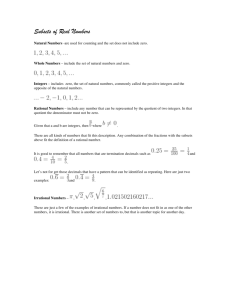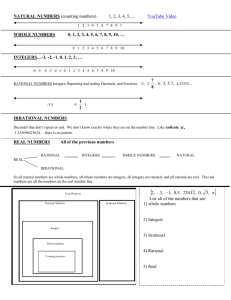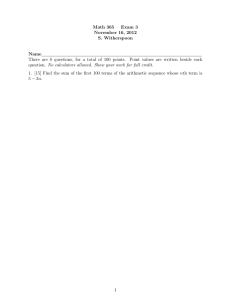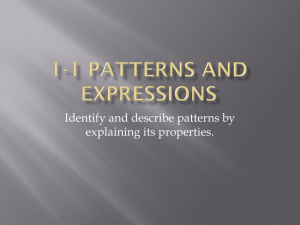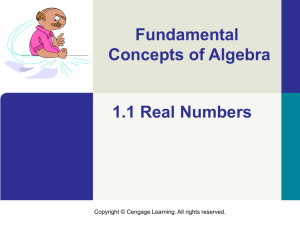1.1 Properties of Real Numbers Subsets of Real Numbers Natural
advertisement
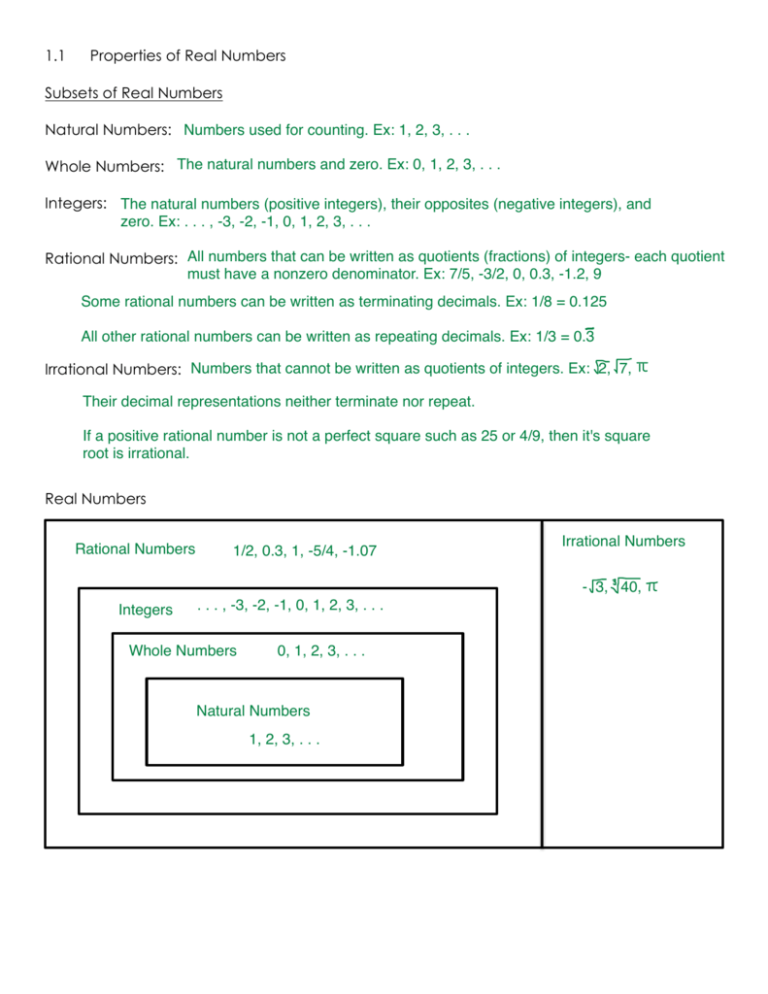
1.1 Properties of Real Numbers Subsets of Real Numbers Natural Numbers: Numbers used for counting. Ex: 1, 2, 3, . . . Whole Numbers: The natural numbers and zero. Ex: 0, 1, 2, 3, . . . Integers: The natural numbers (positive integers), their opposites (negative integers), and zero. Ex: . . . , -3, -2, -1, 0, 1, 2, 3, . . . Rational Numbers: All numbers that can be written as quotients (fractions) of integers- each quotient must have a nonzero denominator. Ex: 7/5, -3/2, 0, 0.3, -1.2, 9 Some rational numbers can be written as terminating decimals. Ex: 1/8 = 0.125 All other rational numbers can be written as repeating decimals. Ex: 1/3 = 0.3 Irrational Numbers: Numbers that cannot be written as quotients of integers. Ex: 2, 7, Their decimal representations neither terminate nor repeat. If a positive rational number is not a perfect square such as 25 or 4/9, then it's square root is irrational. Real Numbers Rational Numbers 1/2, 0.3, 1, -5/4, -1.07 Irrational Numbers - 3, 40, Integers . . . , -3, -2, -1, 0, 1, 2, 3, . . . Whole Numbers 0, 1, 2, 3, . . . Natural Numbers 1, 2, 3, . . . Properties of Real Numbers Opposite of Additive Inverse: Of any number a is -a. The sum of opposites is zero. Reciprocal or Multiplicative Invers:e: Of any nonzero number a is a The product of reciprocals is 1. Properties of Real Numbers Let a, b, and c represent real numbers. Property Addition Closure Multiplication a + b is a real number. Commutative ab is a real number. a+b=b+a ab = ba Associative (a + b) + c = a + (b + c) Identity a + 0 = a, 0 + a = a Inverse a + (-a) = 0 (ab)c = a(bc) a * 1 = a, 1 * a = a a * a = 1, a = 0 Distributive a(b + c) = ab + ac Absolute Value: The distance from zero a number is on the number line. In math, distance is never negative.





